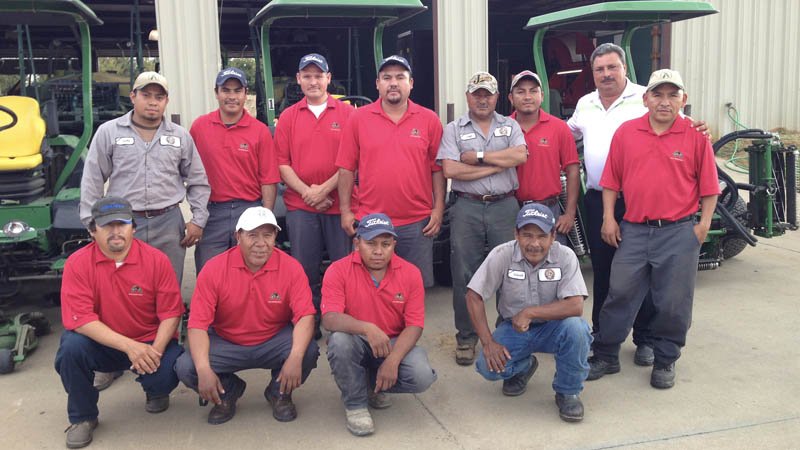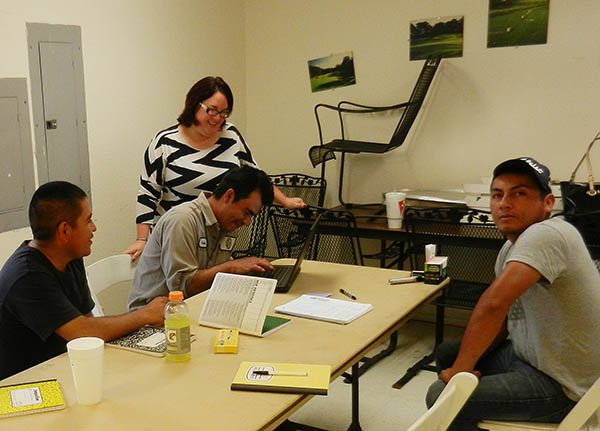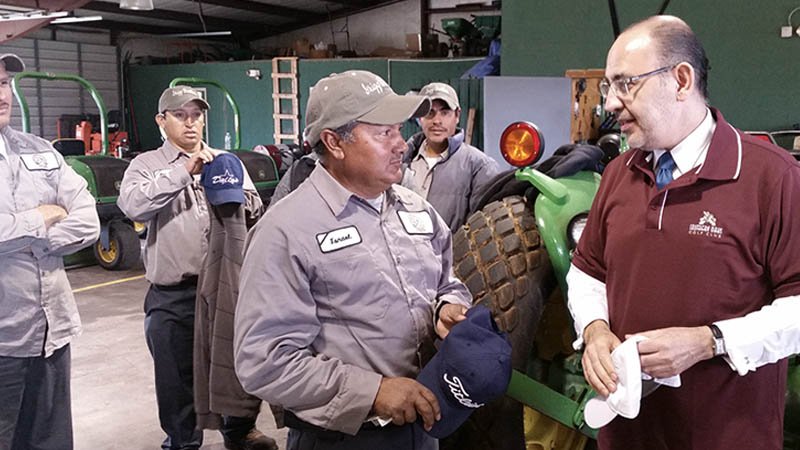
Editor's note: Jorge Croda, CGCS, was superintendent at Southern Oaks Golf Club in Burleson, Texas. Owners recently closed the course to prepare it for sale. Croda also is a three-time finalist for the TurfNet Superintendent of the Year and won the award in 2017.
By Jorge Croda, CGCS
What can we learn from other generations and cultures? How can this learning and experience lead to increased success? My team is privileged to have a diverse mix of employees, we range in ages from 23 to 70 and have a variety of cultural and experiential backgrounds.
Just like golf, life has an innate set of rules and etiquette that we all follow. There can be nuances within these rules and etiquette depending on our cultural and generational influences; however, fundamentally the basics remain the same.
 Understanding and acknowledging that our employees have much to offer our team is a fundamental necessity and hallmark of a successful organization. Research indicates that millennials will be 75 percent of our workforce by 2025, and focus needs to be on engaging top talent across generations. The Pew Research Center outlines generations by birth year range as follows: Generation Z: 1996 and later, Generation Y (millennials): 1981-1995, Generation X: 1965 to 1980, Baby Boomers: 1946 to 1964. The diversity of our workforce has been gradually changing over the last 50 years, as well.
Understanding and acknowledging that our employees have much to offer our team is a fundamental necessity and hallmark of a successful organization. Research indicates that millennials will be 75 percent of our workforce by 2025, and focus needs to be on engaging top talent across generations. The Pew Research Center outlines generations by birth year range as follows: Generation Z: 1996 and later, Generation Y (millennials): 1981-1995, Generation X: 1965 to 1980, Baby Boomers: 1946 to 1964. The diversity of our workforce has been gradually changing over the last 50 years, as well.
This diversity reflects a future workforce that will be even more diverse than today's — by gender, by ethnicity, by culture, by religion and most likely by other characteristics we haven't even identified yet. Acknowledging these diverse shifts in the workplace can sometimes seem daunting, but when we ensure that our mindset looks at diversity as an asset, it becomes clear that there is abundant opportunity to be had. What can we, as leaders, do to leverage the background, knowledge and skills of such a rich workforce to enhance our organizations?
As a leader, continually ask yourself, "What can I learn from other generations and cultures, and how can this learning and experience lead to increased success?" My team is privileged to have a diverse mix of employees; we range in ages from 23 to 70 and have a variety of cultural and experiential backgrounds.
Earlier this year, I watched as one of our younger team members took the time after his shift to teach one of our oldest team member the beginning fundamentals of golf. A shared responsibility led to shared interests and the beginnings of a mutually beneficial relationship. This instance demonstrates the human connection that can so often be lacking in today's society. It is these shared experiences that make us who we are and create opportunities to flourish.
Understanding your team
Defining and aligning the vision and cultural values of your team and/or organization to be consistent with generational and cultural expectations is the key to building a successful team.
What makes each generation tick is different. If you have a diverse workforce then your responsibility as a leader is to take the time to get to know and understand your team members and identify their strengths and expectations. Identify the team members who have more multicultural experience and lead them to act as a bridge between their teammates with less cultural diversity. These identifications allow employees to draw from their cultural backgrounds in regards to the needs of the team and organization and use that expertise to be creative and innovative.
As a team leader, it is important to remember that you have to elicit input from all cultures represented in the team. Learning to adjust your style as a leader according to the nuances of your team makes a difference. Leverage the strengths of your team to grow each other professionally and accomplish the goals and objectives of your organization with creativity and innovation.
When your team is in alignment with the vision, everyone feels that their voices are heard and they will invest more effort into the time and quality of work. To create lasting positive change for generational diversity, it is critical that the vision and cultural values are consistent with current employees' expectations.
As expectations, beliefs, and behaviors change in organizations, so should the cultural values. As a leader, your responsibility is to ensure that your team understands the vision and cultural values and the role they play in the pursuit of these. They must also see you being a model of the expected behavior. If you are authentically living it, you can expect your team to be living it as well. Take opportunities to honor your employee's diversity. It could be something small like birthday recognitions or a larger scale cultural celebration. Do you have employees that have military experience? Is there a way that you can recognize and honor that contribution? Absolutely. If you are stuck when trying to come up with easy, no-hassle ways to show recognition, first just do it verbally. A simple "thank you" goes a long way. It shows that you are aware of that person and appreciate them. If you want to do more but don't have any ideas, try a simple google search. The internet is a wealth of ideas! No gesture is too big or too small.
Actions that demonstrates acknowledgment and appreciation are never wasted.

Communication, contribution, and curiosity
Keep communication honest, open, and frequent. Look for the positives in all of your team members and do not hesitate to point out what they are doing well, even the smallest of things. A little bit of recognition and praise goes a long way. If your team sees you doing it, they will do the same. Allow your employees to take ownership of their responsibilities and become leaders. Adopt a "Teach to Teach" mentality. Can they contribute to the training of other employees? Do they have insight in how to accomplish tasks in a more productive way? Do they have ideas on how to tackle challenges? Encourage curiosity and the pursuit of learning. Ensure that the environment and workplace culture you create is conducive to learning.
We should all have the mindset of being lifelong learners, no matter how big or small the learning is. This curiosity leads to opportunity and opportunity leads to success. Build a team of individuals that have the desire to be learners. There is a saying, "When one teaches, two learn." Let your employees be active, participating, appreciated members of the team. This will increase their emotional and physical investment in their job and positive results will follow. As a leader, you must create the conditions that allow cultural and generational appreciation and positive outcomes to occur.
Identify and foster leadership
You cannot just build a team of diverse employees and then expect immediate positive outcomes. You have to identify leaders and foster the skills that you want celebrated.
Different cultures and different generations expect different things; a diverse workforce requires leaders with a unique set of skills. Do not despair, if you don't feel that you have these skills, you can acquire them by utilizing the background, knowledge and experience of your workforce to learn and grow in your role as a leader! In order to find success you must be willing to be flexible, teachable, and approachable.
An effective leader helps their employees find common goals and must inspire and engage across all cultures and generations. Having a clearly defined vision, along with stated goals and expectations is critical to an organization's success. Likewise, we must know our employees, understand what their strengths are and use those strengths to improve upon their weaknesses and teach fellow employees, all while working towards organizational and/or departmental goals.
Just like the golf course, when we are proactive in our approach and take the time to nurture our employees, beautiful growth happens.


